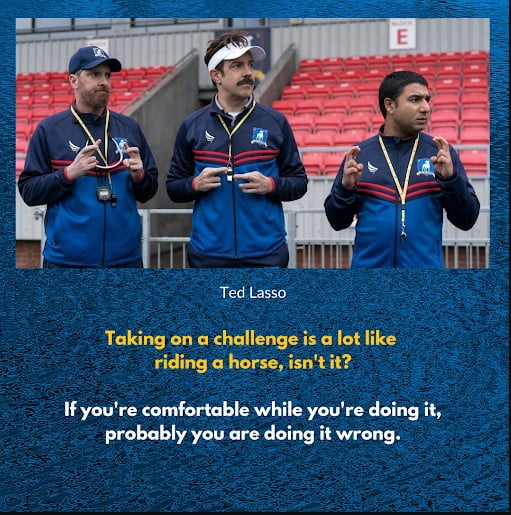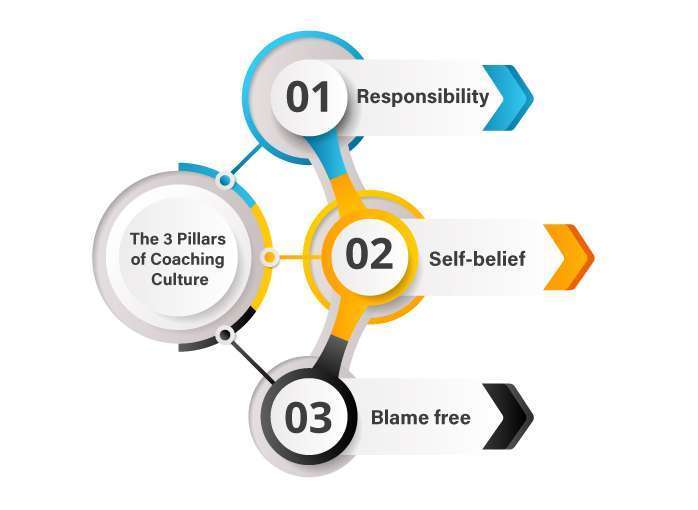Introduction
The previous centuries of successful leadership was defined by the ability of leaders to have the correct answers. However, in this century, a drastic change is needed for the leader to be a coach. Coaching Leadership Style is the need of the hour to future-proof leadership.
“In the past, a leader was a boss. Today’s learners must be partners with their people; they no longer can lead solely based on positional power.“- Ken Blanchard
Coaching style of leadership integrates the coaching mindset and personal behaviours of leaders to enable the leaders, as coaches, to see the potential of their employees and partner with them to tap into that reservoir of possibilities.
The Role of a Leader as a Coach
In the 21st century, the responsibilities of a leader are undergoing constant changes. However, as a leader, your role would include-
- Leading, instead of managing, teams and employees
- Maximizing your team’s/organization’s potential and performance
- Stimulating innovation and growth
- Shaping new leaders
Adopting a coaching leadership style would enable the leader to achieve all of the above more efficiently and holistically.

What Is a Leader as a Coach?
Coaching leadership stands in stark contrast to the traditional leadership style. The approach of the leader is what presents the difference between both leadership styles.
The autocratic leadership style focuses on top-down decision-making. The coaching leadership style is characterized by partnering, collaboration, guidance, and support.

Leader as a Coach involves leaders providing assistance and direction against directives and commands. Employees learn how to adjust to a continuously changing environment in ways that spark new vitality, ingenuity, and commitment.
Must-Have Coaching Skills Every Leader Needs
Coaching style of leadership incorporates basic professional coaching competencies and skills. Let us look at what are the coaching skills that every leader needs-
Balance care and challenge
Ask yourself- are you sensitive to the needs of your employees? Do you care for them? Do you challenge them when needed?
A leader, as a coach, must tread a fine balance between both. Leaders, as coaches, propel team members to go beyond just achieving their targets by infusing the human touch.

Focus on Potential
A leader, as a coach, looks beyond the current level of performance of the employee and focuses on their potential. Leaders, as coaches, endeavour to unlock that potential.
Active Listening
A leader, as a coach, must listen to his/her team without any agenda. This is one of the most important, yet challenging, coaching skills to master. A great example of a leader-coach who listens is Satya Nadella, CEO, Microsoft Corp. Jean-Phillipe Courtois, a member of Nadella’s leadership team at Microsoft describes Nadella’s ability to listen as “He’s with you. You can feel it. You can see the body language. It doesn’t matter if you’re a top executive or a first-line seller; he has exactly the same quality of listening.”
Ask and Not Tell
A leader, as a coach, uses powerful questioning to handle issues, solve problems and elicit creative ideas from employees.
Statements and commands stop creativity and possibilities. Asking questions is empowering and opens up possibilities to change!
The secret is to ask open-ended questions as against close-ended questions. For example- “How was the bus ride to work?” as opposed to “Did you like the bus ride to work?”
Provide a non-judgmental safe space
Leaders, as coaches, inspire their team members to converse openly without any fear of being judged or of retaliation. Microsoft had a very hostile work culture between teams. Satya Nadella, the CEO of Microsoft, encouraged the people at Microsoft to face their mistakes and learn from them.
Give Feedback
A leader, as a coach, gives constructive feedback that would aid the team members to thrive personally and professionally. The leader-coach should also be welcoming to feedback for self-improvement. 360-degree feedback for the leader-coach and team members increases the efficacy of the coaching leadership style.
Champion Learning and Development
Leaders, as coaches, invest time to develop the team members by mentoring, guiding, and supporting them as per their needs. Leaders, as coaches, believe in empowering their teams to support them in the discovery of a larger role and their purpose in the organization that helps enhance individual performance dramatically.
How Does Coaching Leadership Style Unlock Potential?
Coaching leadership style believes in maximizing the potential of employees, both personally and professionally, rallying them towards a higher purpose, and partnering with them to actually get there.
Leaders, as coaches, focus on amplifying employees’ potential both personally and professionally. A leader, as a coach, does not focus only on the professional potential of employees as he/she is invested in the all-around development of the employee.

In the coaching leadership style, leaders, as coaches, pioneer the personal and professional advancement of team members. The leader, as a coach, partners with the employees to discern individual strengths and achievements, which are celebrated and honed. Sheryl Sandberg, former COO of Facebook (now Meta), used to celebrate the success of her employees. She believed this would encourage them to scale greater heights. Leaders, as coaches, assist the team members to identify weaknesses and work on them instead of judging them for their shortcomings.
How Does a Leader as a Coach Improve Performance?
A recent survey revealed the three most often quoted reasons for performance degradation:
- Motivational Deficit
- Skills Deficit
- Resources Deficit

Usually, a deficit is a zero-sum game. If one is running short of $500, one can earn/ beg/ borrow/ steal to negate the deficit. Similarly, the deficit in skills and resources can be nullified by adding skill sets and resources.
A leader who is a Coach can spot the deficit and propel the employees to work towards it (without resentment) Leader who coaches can steer the efforts of the peers and subordinates by aligning the vision, goals and targets with consent!
How Coaching Leadership Style Solves Motivational Deficit?
But the motivational deficit is a different ball game because the relationship between the one motivating and the one getting motivated is inversely proportional. The more you motivate, the less motivated the recipient becomes! Motivational deficit demands leaders with coaching skills.
Coaching for motivational deficits requires trust building. A glimpse of it can be seen in the manner Aristotle coached Alexander. He did not coach him in military strategy or administration even though that was Alexander’s father’s explicit instructions. On the contrary, Aristotle motivated Alexander to look at the world differently and encouraged him to pursue poetry, beauty, and patterns in nature. Aristotle was coaching the ‘person’ and not the ‘problem’.
Trust and Safe Space
Leaders, as coaches, develop trust and create a safe space for employees to communicate freely without any qualms about being judged. Although many leaders are apprehensive of open communication, leaders as coaches allow free conversation to build trust and a sense of belonging. When employees feel listened to without any judgements, they feel a sense of belonging. Morale and motivation skyrocket out of belongingness.
Power to the Employees
Leaders as Coaches tackle the issue of the motivational deficit by ensuring that the command and control style of leadership is disbanded. “I am a leader so you do as I say-” approach is not empowering. Coaching leadership style gives power to the employees and holds them accountable. This sense of being empowered along with accountability helps bridge the motivational gap.
How Coaching Leadership Style Solves Skills and Resources Deficit?
A leader as a coach asks powerful questions instead of telling answers. The power of questions directs the employees to seek the answers and become accountable for the outcome.
Leaders, as coaches, master the skill of being ‘present’ for the employees. When employees are skill deficient, getting rid of him/ her is the default approach
Performance v/s Potential
A leader, as a coach, looks at the employee’s potential and not just the current level of performance. Leaders, as coaches, use a different lens and view the same employee differently. A coaching conversation with the employee can reveal the unique strengths he/she has.
● How can they contribute to the organization in a manner that they had not thought of earlier
● How can he/she upskill to continue to contribute
● Does he/she feel the need to upskill
● How could he/she have known the need to upskill earlier
● How can upskilling help his/ her future self (personally and professionally)
All of these questions can be explored and this helps the employee to realize why he/she should upskill instead of being directed to enrol for training programs.
The coaching conversation will also empower the employee to move from a scarcity mindset to an abundance mindset by helping him/her come up with answers to coaching questions surrounding the resources he/she needs. The answers make him/ her accountable and also leave him/ her feeling empowered which definitely translates to action.
Get Leader As Coach Program from Regal Unlimited
Our Leader As Coach (LAC) program, our in-house curated premier leadership program based on ICF and EMCC frameworks helps embed a coaching culture in the organization. The Leader As Coach Program has empowered more than 1000 leaders to add coaching to their skill set.
These Leaders, as coaches, have inspired and motivated their teams and transformed the fortunes of their organizations!
7 Reasons Why You Deserve our Leader As Coach Program
1. Get trained by Subash CV (MCC), a Leadership & Executive Coach, an INSEAD Alumnus, Founder and Managing Partner, Regal Unlimited, who has more than 21 years of industry experience as a corporate banker and leader.
2. This curated program offers 10 hours of concepts, theory, processes, and skills. We cover topics such as Level 5 Leadership, Emotional Quotient for Leaders, and Vulnerability & Authenticity for Leaders to Lead Organizations.
3. This one-of-a-kind program also offers 10 hours of mentored coaching practice with a Regal Coach.
4. We uphold the spirit of adult learning with assignments that enrich your learning experience.
5. A session of our flagship and critically acclaimed Regal @60 tool that helps you align your life with your personal and professional goals.
6. 1 hour of personal mentoring after 30 days of the courts to address roadblocks
7. Access to our dynamic Regal Coaches Community with 300+ coaches who represent the cream of the coaching industry for continued learning.
You can visit our webpage for more information on our Leader As Coach Program.
FAQs
Why Should a Leader Be a Coach?
“It is not the strongest of the species that survives, nor the most intelligent that survives. It is the one that is most adaptable to change.”- Charles Darwin.
In an ever-changing world, future-proofing one’s leadership is an obvious step. If you don’t adapt, you put yourself at risk of becoming irrelevant! Blackberry laughed at Apple when the latter launched the iPhone. Today, Blackberry has been reduced to a thing of the past.
As companies pivot towards technology and agile teams, which is important, they risk ignoring the human aspect of the business. A lack of human touch in business will come back to bite a business sooner than expected. If technology and humanity go hand in hand, those are 2 Aces that will help you win again and again. Coaching Leadership style helps harmonize technology and the human touch which will place you far ahead of the competition.
What Does It Mean for a Leader to Be a Coach?
A leader, as a coach, would inspire people with his/ her presence. His/her team members would feel safe around him/her and would be encouraged to be open while communicating. The employees would tap into their potential and exceed their expectations personally and professionally.
Work will transform into play. A stressful workplace becomes a happy workplace. The attrition rate goes down and employee loyalty goes up. A leader, as a coach, will groom future leaders too. He/she will not mind focusing the spotlight on the employees to celebrate their achievements. This will encourage the employees to scale greater heights.
Why Is Coaching So Important?
The top 6 organizational benefits of a coaching leadership style are-
- Helps increase revenue/ margins
- Develops the leadership pipeline to create able successors
- Helps equip leaders and teams for change management
- Reduces or arrests attrition
- Improves team performance
- Develops healthy company culture
You can read our blog addressing the same topic for further details.
How Can Coaching Help Leaders?
● Increased Self-Awareness
● Enhanced Self-Confidence
● Greater Focus and Building on Strengths
● Augmented Communication Skills
The professional benefits of leadership coaching are that it-
● Brings New Perspectives
● Builds Executive Presence
● Improves Business Performance
● Improves Teamwork and Collaboration
Why Is Being a Coach Important to You?
1. Handling change and disruption
2. Enhances productivity
3. Improves collaboration
4. Problem-solving
5. Coaching culture
6. Achieve short-term and long-term goals
7. Adapt to the current workforce
8. Manage diversity
You can read our blog addressing the same topic for further details.







